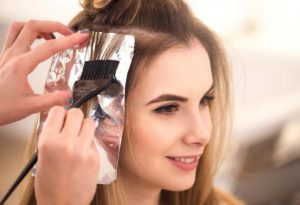It is very common to dye your hair in western countries such as Europe and the United States. Over half of all women over the age of 40 dye their hair, estimates show. And a few percent of men.

But can hair dyes increase the risk of getting cancer?
Previous studies have suggested that women who dye their hair regularly may be at higher risk for bladder cancer and breast cancer.
Now a new study shows that there is hardly any such connection.
No increased incidence of common cancers
Women who dyed their hair regularly did not have an increased risk of dying from cancer. The researchers also found no increased risk for the most common cancers, the study shows.
– This also applied to cancers that have previously been associated with concern, and which have been investigated before with a view to a possible connection with cancer, such as lung cancer and bladder cancer, says director Giske Ursin in the Cancer Registry
Women with colored hair had no increased risk of either brain cancer, bowel cancer, lung cancer, kidney cancer, bladder cancer, mole cancer, squamous cell carcinoma (a form of skin cancer) or hormone-dependent breast cancer.
The study was conducted at the Department of Epidemiology at the Medical University of Vienna. It is the largest on the subject so far, and is published in the British Medical Journal.
Possibly slightly increased risk of rare breast cancer
The researchers also found no increased incidence of breast cancer overall among those who dyed their hair.
However, among breast cancer patients in this group, they found an indication of a slightly increased risk of tumors that are not affected by sex hormones. These are called estrogen- and progesterone-receptor-negative tumors.
This slightly increased risk appeared to be greater in women with natural blonde or light brown hair.
– It was a minimal increase. And even for women who had dyed their hair more than 200 times, there was a low or moderate increase in risk, Giske Ursin explains.
The uncertainty is also so great that the researchers cannot rule out that the risk is actually the same for everyone, regardless of whether they have dyed their hair or not, according to Ursin.
More demanding to treat
Breast cancer can be divided into two main groups, those that are hormone receptor-positive and those that are estrogen receptor-negative. See more in separate fact box.
– Hormone receptor-negative breast cancer is a form of breast cancer that can be extra demanding to treat because it can not be affected by antihormonal treatment, Ursin explains.
Breast cancer that is hormone receptor-positive is most common, and accounts for 70 percent of breast cancer cases, according to communications consultant Kim Daniel Lindegaard in the Norwegian Cancer Society.
Slightly increased risk of ovarian cancer
The researchers also found a slightly increased risk of ovarian cancer among those who dyed their hair often.
– The researchers found signals of a small increase in risk, in the order of 10 percent overall, and slightly higher for women with particularly many hair dyes, says Ursin.
But here, too, there was considerable uncertainty about the results.
The risk of getting ovarian cancer is basically low for the individual woman. In Norway, 1.3 per cent are affected before the age of 75.
– A risk increase of 10 percent will then lead to a total risk of 1.4 percent.
In other words, the risk increases from 13 to 14 cases among a thousand women, Ursin explains.
Slightly increased incidence of skin cancer
The researchers also found a slightly increased incidence of skin cancer among women with colored hair than others.
This was true of basal cell carcinoma, which occurs in the epidermis and rarely spreads to other organs.
This was especially true for women with naturally blonde hair.
Working as a hairdresser probably carries an increased risk
Giske Ursin believes it is always important to see individual studies like this in connection with what is already known about the topic.
“The WHO’s cancer research body, IARC, classifies working as a hairdresser as being associated with a likely increased risk of cancer,” says Ursin.
This is because many hairdressers are highly exposed to the chemicals in hair dyes many times daily or weekly.
– So far, they have had too little knowledge base to draw conclusions about hair coloring among private individuals. Therefore, it will be interesting to see if this study can contribute to a clearer classification from the IARC, says Ursin.
Smoked and drank more alcohol than others
Another reason to take the results with a pinch of salt is that there were other differences between the women.
Among women who dyed their hair regularly, there were several smokers. They also used more alcohol than women with natural hair color. The researchers themselves also point this out.
– Thus, it is difficult to determine whether a possible increase in risk is due to hair coloring or other risk factors, Ursin emphasizes.
– The risk of cancer can also vary between different population groups, countries, and in different time periods, Eva Schernhammer emphasizes in a press release. She led the study and is also the head of the Department of Epidemiology at the Medical University of Vienna.
Different gene types, other substances women may be exposed to and not least different colors and forms of hair dyes can also play a role, according to Schernhammer.
Therefore, she believes more research is needed to possibly confirm the findings.
Reference:
Zhang mf:Personal use of permanent hair dyes and cancer risk and mortality in US women: prospective cohort study.British Medical Journal. September 2, 2020.
IARC: Occupational exposure to hairdressers etc. IARC Monographs on the Evaluation of Carcinogenic Risks to Humans Volume 57.











